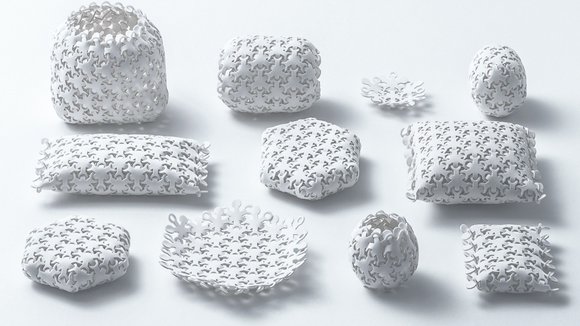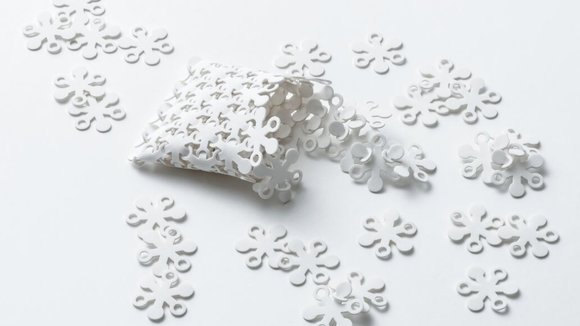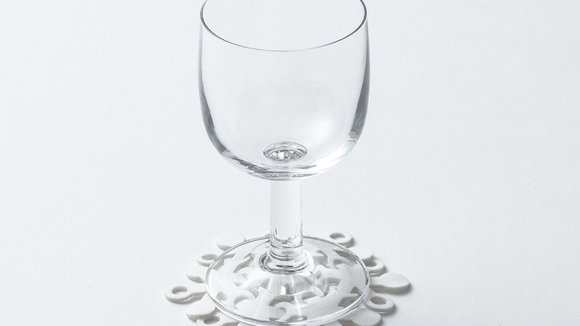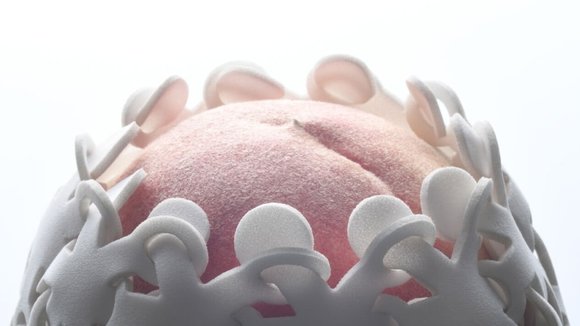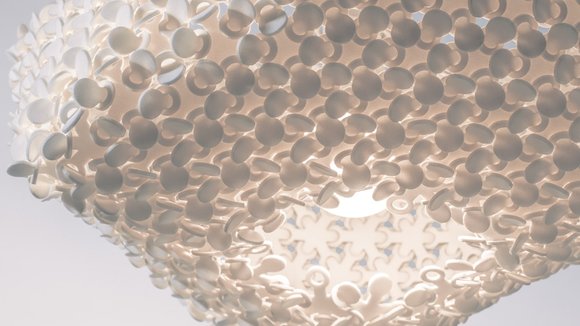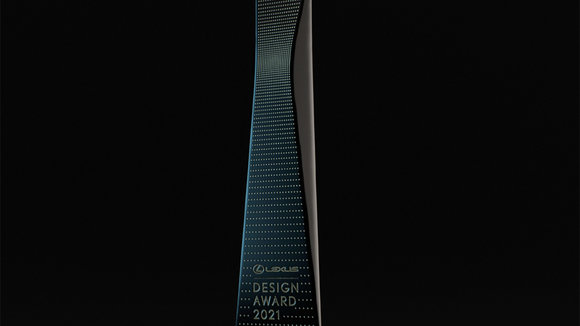1/6
This modular packaging is inspired by how various atoms link together to form different materials!
Everything starts with a small building block. Humans, animals, plants, all started as a single cell, multiplying into various multi-cellular organisms… and the world around us is made from materials that are superclusters of individual atoms and molecules. In fact, the very medium you’re reading this on is an organized grid of individual building-blocks called pixels! Titled the “CY-BO”, this packaging concept by Kenji Abe follows the same ‘Think Big but Start Small’ principle found in nature and in life around us. A finalist at the LEXUS DESIGN AWARD 2021, CY-BO relooks at how packaging (and even products) are built, bringing an almost cellular approach to design by basing the packaging around a single 6-pronged unit that can connect together, forming a chain-link that can be used to create complex shapes. When expanded, CY-BO reads CYtological packing material beyond BOundaries… a fitting name as it turns the old ‘Form follows Function’ adage on its head by creating a unit so versatile, it can be turned into any form or fulfil any function. Sort of how a simple brick can create a building of any shape.
In CY-BO’s defense, it isn’t really a modular concept, but rather a molecular one. The unit in question is a six-pronged shape, punched out of a sheet of foam. Each of the prongs comes with one of two elements – a button, or an eye – and individual CY-BO units can be interlocked into each other by passing buttons through eyes, creating a chainlink fabric of sorts. However, the 6-prongs allow the units to form more complex 3D shapes and contours, giving it infinite versatility. Kenji’s vision is to completely reimagine packaging by creating a standardized unit that can ‘weave itself’ around products. Square-shaped products get wrapped in CY-BO in a square pattern, spherical products in a sphere created using CY-BO units, and if the product is abstract-shaped, it can easily be wrapped in CY-BO by piecing together the individual foam units in the shape of said product. This, broadly, does a number of things. Firstly, it creates a standard, eliminating the previous standards of plastic packets, paper boxes, or cardboard cartons. In doing so, it makes it easy to recycle and reuse CY-BO units, massively eliminating waste. Secondly, made from foam, the CY-BO eliminates the need for bubble-wrapping products. Given its inherent ability to cushion, the CY-BO becomes both the packaging as well as the dunnage, saving materials and saving space. Moreover, fragile products can simply be wrapped in additional layers of CY-BO, further expanding on its modular/molecular design. Thirdly, the CY-BO goes beyond packaging, becoming a useful material in its own right. Sure, it can easily be recycled by separating and reusing the individual CY-BO units… but it can be up-cycled too. Quite like how paper and plastic become the fodder for upcycled craft projects, CY-BO can be redesigned into a variety of products like stationery-cases, lamps, coasters, even clothes. Its interlocking design becomes almost like a creative constraint, allowing people to reimagine CY-BO units in a variety of ways, quite like how the same set of LEGO blocks get turned into millions of different things, thanks to the creative community of LEGO users. With CY-BO, it becomes more commonplace and provides a unique circular approach to product packaging, benefiting everyone.
“Benefiting everyone” are the keywords there, illustrating how one simple foam unit could replace the tonnes of paper boxes getting used and thrown every day, or plastic covers ending up in our landfills and oceans. The CY-BO is small, allowing it to easily be pulled apart and reused. Moreover, it could even be built from a variety of other materials, including more biodegradable ones, or even synthesized bio-materials that could serve as nutrition for animals in our oceans. CY-BO’s incredibly versatile design backed by designer Kenji Abe’s systems-approach is what enabled the project to be selected as a finalist in this year’s LEXUS DESIGN AWARD 2021 with the competition’s theme being “Design for a Better Tomorrow”. Currently in their 9th year, the Lexus Design Awards are on a mission to ideate and innovate for a better future for humanity as well as for the planet. The Awards program’s underlying theme of “Design for a Better Tomorrow” empowers participants to build solutions that have a uniquely positive impact on society, humanity, and allows the LEXUS, in turn, to reward a new generation of designers for their impactful ideas. Creating the perfect environment for a design to grow, LEXUS helps engineer ideas into real, impactful solutions. Apart from accelerating, developing, and promoting design projects, the Lexus Design Award helps kickstart design careers too, with exclusive mentorships from international design stalwarts like Joe Doucet, Mariam Kamara, Sabine Marcelis and Sputniko!, as well as funding for prototypes (up to 3 million Japanese Yen or $25,000 per project) and the opportunity to have your work judged by the biggest figures in design in the final Grand Prix competition. This year’s judges include Paola Antonelli (Senior Curator at MoMA), Dong Gong (Founder and Principal Designer at Vector Architects), Greg Lynn (Architect and CEO at Piaggio Fast Forward), and Simon Humphries (Head of Toyota and Lexus Global Design).
CY-BO is one of the six finalists of the LEXUS DESIGN AWARD 2021. Stay tuned as we feature all the finalist designs following the Grand Prix Winner Announcement here on Yanko Design!
Click Here to See All Six Lexus Design Awards Finalists!
CY-BO is a new form of cytologically-inspired packaging material that can transform into various shapes by combining the pieces together. Infinitely reusable and rearrangeable, it can be converted into all manner of products for different applications depending on the ideas of the user.
CY-BO can envelop fruits such as apples and peaches, dishes etc, and it can also be used as a coaster as it is a material with excellent water resistance.
Click Here to See All Six Lexus Design Awards Finalists!
发布于2021-08-17
设计师
Kenji Abe
相关推荐
